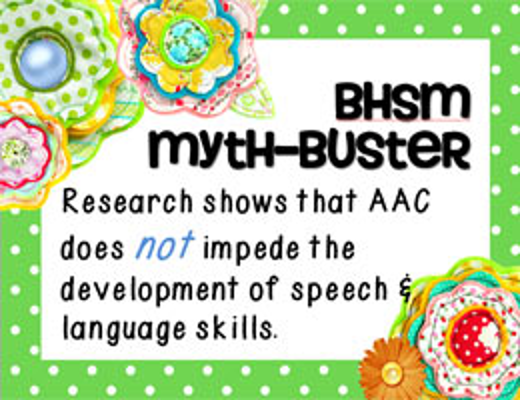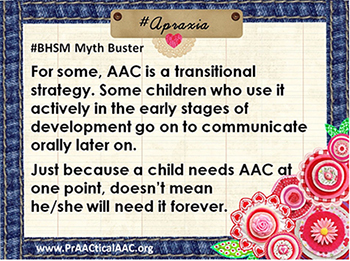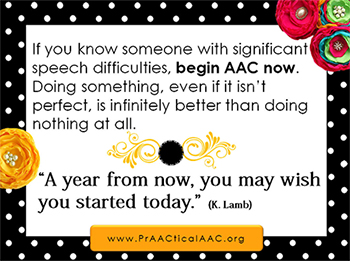
* credit: www.prAACticalaac.org
Did you know:
* research shows that the use of AAC does not impede the development of speech and language skills.
Interestingly enough, the use of AAC actually assists those who are able to speak but have severe speech and language disorders to improve their speaking abilities!
Therapy that incorporates the use of speech-generating devices that the individual uses as their own voice, along with oral motor speech production therapy is usually more productive than therapy that does not incorporate their use. The individuals are more apt to verbally repeat what they say on the device more efficiently than what they do when another person models the speech productions! It’s as if they hear the speech-generated voice as their own and therefore are better able to copy the correct productions.
In traditional speech therapy for these individuals, the main objective is to achieve speech clarity. Which is definitely a need!
Oral motor speech therapy for these individuals is typically required due to the severity. Traditional speech therapy methods do not target the underlying issues of severe speech disorders. These individuals need a strong foundation and hierarchical approach to speech skill development for clarity, that is not given using sound-by-sound remediation or a phonological process analysis approach to treatment.
 Another perk to using AAC as assistance is that many times, an expressive language issue goes unnoticed or is disregarded until clarity is achieved.
Another perk to using AAC as assistance is that many times, an expressive language issue goes unnoticed or is disregarded until clarity is achieved.
The use of AAC assists both speech clarity and language development.

* credit: www.prAACticalaac.org
Language skills are more visible to the individual on a speech-generating device via the “sentence strip.” The correct sentence forms are modeled and duplicated by the individual one word or form at a time to create the sentence on the screen. Another plus is that the ability to create appropriate sentences on the device can be spoken at the same time for verbal practice.


